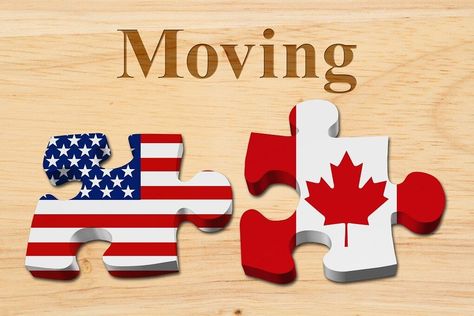Thinking about crossing the border northwards from the United States and moving to Canada? You’re not alone. According to the data, over 10 000 Americans decided to leave the country and move to Canada in 2019.
Canada offers a lot of opportunities to you and your family when it comes to job opportunities, health and education.
Before people think of travelling to the great white north to visit, learn or work you have to understand how you can legally get there and live in Canada.
How can I move to Canada from the US as a permanent resident?
Canada Express Entry is one of the simplest processes that a citizen from the United States needs to undertake to be granted an immigrant status in the country.
Express Entry is a method for selecting IMM inviting applicants for most of the Canadian immigration programs in three categories. If you are a member of one of the following programs you may be allowed to apply for Canadian permanent residence through Express Entry.
Six months is in fact one of the fastest times in which applications for permanent residency submitted through Express Entry are processed with approval rate of 80%.
1.Federal Skilled Occupations (MSF)
If you have twelve months of skilled work experience, meet the Minimum Official Languages in French or English and a FSW selection grid score of 67 points, you can apply for a Federal Skilled Worker Program.
2.Federal Skilled Trades Program (FST)
This program holds that if you posses skills in a trade, you have been working in your trade for 2 years, you have a proof of ability to communicate in French or English, you have a Canadian Certification to practice your trade in Canada or an offer of a job in your trade in Canada, you are fit to apply for the Federal Skilled Trades Program.
3.Canadian Experience Class (CEC)
In the event you have obtained minimum language skills in French or English and have worked in a TEER 0, 1, 2 or 3 job in Canada on a valid work permit for a year or more, then you may apply for the Canadian Experience Class.
These programs are timed and carry a point system offer competition. However, applicants should know that simply satisfying the requirements of any of these programs is not adequate. Candidates receive a score, and scores of one candidate are compared with scores of other candidates; only the top-ranked candidates will be able to apply for immigration to Canada.
Wondering how your CRS score might look like? Now, let’s take a look at the tool the Canadim has developed to help you gauge your chances, namely CRS score calculator:
Can a US permanent resident work in Canada?
If you are moving from the US to Canada to work, there are different types of work permits that may be available to you, depending on your circumstances:
1.CUSMA Work Permits
CUSMA work permits are issued through the International Mobility Program, so the willing Americans with a job offer from a Canadian employer can work in Canada temporarily without having to get an LMIA first.The Canada-United States- Mexico Agreement (CUSMA) is an economic framework that seeking to build a trade relationship between Canada and the United States and Mexico by allowing selected categories of temporary workers into each country.
They also enable those American-based firms which have subsidiaries in Canada to transfer some of their American staffs in managerial or executive capacities easily.
2.Employer Specific Work Permit
If you have received a confirmed offer from a employer in Canada you may be allowed to enter the country on an employer-specific work permit. Most employer-specific work permit does, and this was done through a document known as a Labour Market Impact Assessment (LMIA), which is an undertaking by the employer to show that he or she sought a Canadian or allowable permanent inhabitant to perform the same job in Canada before offering it to eligible foreign worker.
All those who plan to change employer after arriving in Canada on an employer specific work permit will have to apply for a new work permit.
3.Spousal Open Work Permit
If your spouse or common-law partner is a temporary foreign worker or international student in Canada, or if you are undergoing the inland sponsorship process you may be eligible for a spousal open work permit. This type of permit is not employer specific so if you change jobs you will not need to get a new work permit as long as your current permit is valid.


